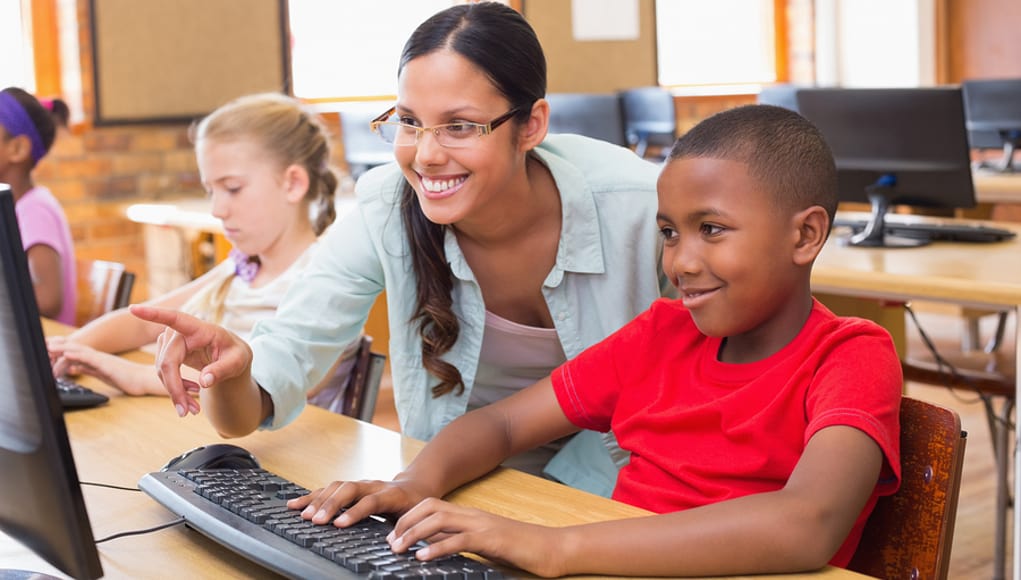Be Anything

Authentic learning occurs when students find meaning and purpose in what they’re learning. It is one of the most effective approaches an educator can use to engage students and develop a productive learning environment. As educators, we strive to build authentic learning experiences, but without clear components or a framework, it can be difficult to know whether or not your classroom is truly authentic. Be Anything’s Authentic Learning Taxonomy componentizes aspects of the authentic learning continuum. When using this tool educators will be able to identify why students are stuck or striving, plan for targeted interventions, and develop authentic learning experiences.
While building a learning experience with and for students, it is important to meet them where they are across the learning continuum. Structures that support authentic process-driven learning can generate scaffolds and cultivate exploration for all students. Looking through the lens of learning in professional and creative contexts, helps us recognize that learning occurs as a result of intention-driven thought patterns. Retention and iteration function most effectively as equal parts in the learning continuum, leading us towards focusing on process over content.
In order to develop a sequential view of authentic learning, one must recognize the process behind constructing and deconstructing understandings, as well as pinpoint how this process connects to reconstructing extended learning opportunities. When following the sequence of authentic learning, the terms “Understanding,” “Experience,” “Authenticity,” and “Anchor” emerge as building blocks. Utilizing these building blocks to design authentic learning experiences will aid students in constructing more responsive, actionable, and transferable understandings.

Understanding
- Need to know
- Learning objective
- Expertise
- Skill
- Content Knowledge
Understandings are processes or aggregates of information that are, or to be retained by a learner. Retention of understandings is often the most heavily evaluated aspect of learning. And while retention is important, its relationship to student context requires thoughtful consideration. Understandings become relevant to students when educators design learning experiences that allow them to put their higher order thinking into practice. This supports long-lasting habits of educational independence.
Experiences
- Activity
- Discussion
- Workshop
- Practice
- Assignment
Experiences are scaffolds that educators use to materialize the authenticity of an understanding. In an authentic learning environment, students and educators develop context around understandings to make them authentic. Opportunities for students to engage in different viewpoints and build upon their understandings can aid in cultivating a drive to learn.
Authenticity
- Relevance
- Return
- Importance
- Value
- Utility
- Need
Authenticity occurs when students and educators strive to align learning experiences with anchors. Students should be able to identify the value and importance of a learning experience. The value students identify should point to two types of returns, satisfactory or iterative. A satisfactory return might be “This learning experience helped me accomplish my goal”. An iterative return might be “This learning experience helped me reevaluate my goal”. In both cases, students develop deep understandings by connecting a learning experience to an anchor.
Anchor
- Project
- Problem
- Interest
- Passion
- Idea
- Goal
- Intention
Anchors are concepts or products that students are genuinely invested in. They are actualizations of students’ values. This inspires intrinsic motivation. Anchors are learner defined and fundamentally important to the learner, even outside of the learning environment. They are the foundation behind an authentic learning experience. They act as the building block that connects the learner to experiences and content knowledge through authenticity.
When assembled with thoughtful consideration, the building blocks an authentic learning experience are deconstructed and recycled. This materializes through extended learning opportunities or the reconstruction of understandings.
Reconstruction via Authentic Learning
Utility in Additional Understandings
When students experience returns, understandings that help them carry out their intentions, they progress by utilizing and seeking out more understandings.

Understandings Resurface
When the utility for an understanding resurfaces alongside new context, the student recognizes its utility and recalls their content knowledge.

Engagement in Additional Experiences
When students form understanding through experiences that were authentic, they find value in their experience and consider their understandings to be relevant and important. This increases engagement in additional activities and workshops.

Unintended Learning
Authentic learning allows students to uncover unintended learning opportunities. They reach their planned learning objectives alongside additional understandings.

Conclusion
Pedagogical approaches such as project or problem-based learning (PBL), are excellent ways to build authentic learning experiences. PBL reinforces the underpinnings behind authentic learning because students learn by doing and utilizing their content knowledge. Be Anything’s Project Management Platform and Authentic Learning Taxonomy are tools that are perfect for scaling project and problem-based approaches to education. These approaches have the power to prepare students for an increasingly dynamic world, all while extending learning opportunities.
- Students Learn Project Management From HQPBL Experience
- Introducing a Framework for High-Quality Project Based Learning
- A Year in Review: High-Quality Project Based Learning
Stay in-the-know with innovations in learning by signing up for the weekly Smart Update.
Brandon Goon (@brandonisagoon) and Willy Golden (@sendependecon) are co-founders at Be Anything. Be Anything is a web app that helps students work on personalized paths in school, manage their projects, gives teachers the context they need to provide just-in-time feedback. Flip the switch from learning experiences created for students to learning experiences created by students.




Ashok
I am pleased to share this article on my social media because of this is the best way to build our nation strong, education is the key, right education from the begining